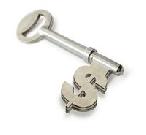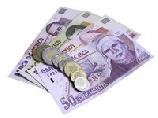
 |
|
| Financial Terms | |
| Kit |
|
Information about financial, finance, business, accounting, payroll, inventory, investment, money, inventory control, stock trading, financial advisor, tax advisor, credit.
Main Page: accounting, inventory control, inventory, investment, credit, payroll, financial advisor, stock trading, |
Definition of Kit
KitA group of components needed to assemble a finished product that has been
Related Terms:economic components modelAbrams’ model for calculating DLOM based on the interaction of discounts from four economic components. Bargain-purchase-price optionGives the lessee the option to purchase the asset at a price below fair market Cash deliveryThe provision of some futures contracts that requires not delivery of underlying assets but Closing purchaseA transaction in which the purchaser's intention is to reduce or eliminate a short position in DeliveryThe tender and receipt of an actual commodity or financial instrument in settlement of a futures contract. Delivery noticeThe written notice given by the seller of his intention to make delivery against an open, short Delivery optionsThe options available to the seller of an interest rate futures contract, including the quality  Delivery pointsThose points designated by futures exchanges at which the financial instrument or Delivery priceThe price fixed by the Clearing house at which deliveries on futures are in invoiced; also the Delivery versus paymentA transaction in which the buyer's payment for securities is due at the time of Direct stock-purchase programsThe purchase by investors of securities directly from the issuer. Equity floorAn agreement in which one party agrees to pay the other at specific time periods if a specific Floor brokerA member who is paid a fee for executing orders for clearing members or their customers. A Floor planningArrangement used to finance inventory. A finance company buys the inventory, which is then Floor traderA member who generally trades only for his own account, for an account controlled by him or Forward deliveryA transaction in which the settlement will occur on a specified date in the future at a price  Good deliveryA delivery in which everything - endorsement, any necessary attached legal papers, etc. - is in Good delivery and settlement proceduresRefers to PSA Uniform Practices such as cutoff times on delivery Gross domestic product (GDP)The market value of goods and services produced over time including the Gross national product (GNP)Measures and economy's total income. It is equal to GDP plus the income Group of five (G5/G-5) The five leading countries (France, Germany, Japan, United Kingdom, and the U.S.) that Group of seven (G7/G-7)The G-5 countries plus Canada and Italy. Group rotation managerA top-down manager who infers the phases of the business cycle and allocates Growth phaseA phase of development in which a company experiences rapid earnings growth as it produces Interest rate floorAn interest rate agreement in which payments are made when the reference rate falls Investment product line (IPML)The line of required returns for investment projects as a function of beta Making deliveryRefers to the seller's actually turning over to the buyer the asset agreed upon in a forward contract.  Maturity phaseA phase of company development in which earnings continue to grow at the rate of the Minimum purchasesFor mutual funds, the amount required to open a new account (Minimum Initial Money purchase planA defined benefit contribution plan in which the participant contributes some part and Open-market purchase operationA systematic program of repurchasing shares of stock in market Opening purchaseA transaction in which the purchaser's intention is to create or increase a long position in Opinion shoppingA practice prohibited by the SEC which involves attempts by a corporation to obtain Overnight delivery riskA risk brought about because differences in time zones between settlement centers Product cycleThe time it takes to bring new and/or improved products to market. Product riskA type of mortgage-pipeline risk that occurs when a lender has an unusual loan in production or Production payment financingA method of nonrecourse asset-based financing in which a specified Production-flow commitmentAn agreement by the loan purchaser to allow the monthly loan quota to be PurchaseTo buy, to be long, to have an ownership position. Purchase accountingMethod of accounting for a merger in which the acquirer is treated as having purchased Purchase agreementAs used in connection with project financing, an agreement to purchase a specific Purchase and saleA method of securities distribution in which the securities firm purchases the securities Purchase fundResembles a sinking fund except that money is used only to purchase bonds if they are selling Purchase methodAccounting for an acquisition using market value for the consolidation of the two entities' Purchasing power parityThe notion that the ratio between domestic and foreign price levels should equal Purchasing-power riskRelated: inflation risk Relative purchasing power parity (RPPP)Idea that the rate of change in the price level of commodities in Repurchase agreementAn agreement with a commitment by the seller (dealer) to buy a security back from Repurchase of stockDevice to pay cash to firm's shareholders that provides more preferable tax treatment Selling groupAll banks involved in selling or marketing a new issue of stock or bonds Share repurchaseProgram by which a corporation buys back its own shares in the open market. It is usually ShopWall Street jargon for a firm. ShoppingSeeking to obtain the best bid or offer available by calling a number of dealers and/or brokers. Stochastic modelsLiability-matching models that assume that the liability payments and the asset cash flows Stock repurchaseA firm's repurchase of outstanding shares of its common stock. Taking deliveryRefers to the buyer's actually assuming possession from the seller of the asset agreed upon Targeted repurchaseThe firm buys back its own stock from a potential bidder, usually at a substantial Three-phase DDMA version of the dividend discount model which applies a different expected dividend Transition phaseA phase of development in which the company's earnings begin to mature and decelerate to UNITS OF PRODUCTIONA depreciation method that relates a machine’s depreciation to the number of units it makes each Non-production overheadA general term referring to period costs, such as selling, administration and financial expenses. Product costThe cost of goods or services produced. Product marketA business’s investment in technology, people and materials in order to make, buy and sell products or services to customers. Product/service mixSee sales mix. Production overheadA general term referring to indirect costs. Purchase discountsA contra account that reduces purchases by the amount of the discounts taken for early payment. Purchase returnsA contra account that reduces purchases by the amount of items purchased that were subsequently returned. PurchasesItems purchased by the company for the purpose of resale. Purchases journalA journal used to record the transactions that result in a credit to accounts payable. product costThis is a key factor in the profit model of a business. product by-productan incidental output of a joint process; it is salable, cost of production reporta process costing document that economic production run (EPR)an estimate of the number equivalent units of production (EUP)an approximation of the number of whole units of output that could have been grade (of product or service)the addition or removal of product open purchase orderinga process by which a single purchase process productivitythe total units produced during a period product complexityan assessment about the number of components in a product product contribution marginthe difference between selling price and variable cost of goods sold product costa cost associated with making or acquiring inventory productive capacitythe number of total units that could be product- (or process-) level costa cost that is caused by the development, production, or acquisition of specific products or services product life cyclea model depicting the stages through product line marginsee segment margin product varietythe number of different types of products purchasing costthe quoted price of inventory minus any steady-state phasethe point at which the learning curve becomes flat and only minimal improvements in performance are achieved FloorInterest-rate option that guarantees that the rate on a floating-rate Purchase pricePrice actually paid for a security. Typically the purchase StochasticInvolving or containing a random variable or variables; involving By-productA product that is an ancillary part of the primary production process, having Finished goods inventoryGoods that have been completed by the manufacturing Joint productA product that has the highest sales value from among a group of products Product costThe total of all costs assigned to a product, typically including direct Production yield varianceThe difference between the actual and budgeted proportions Purchase methodAn accounting method used to combine the financial statements of purchasing power parity (PPP)Theory that the cost of living in different countries is equal, and exchange rates adjust to offset inflation differentials across countries. stock repurchaseFirm buys back stock from its shareholders. Aggregate Production FunctionAn equation determining aggregate output as a function of aggregate inputs such as labor and capital. Factor of ProductionA resource used to produce a good or service. The main macroeconomic factors of production are capital and labor. Related to : financial, finance, business, accounting, payroll, inventory, investment, money, inventory control, stock trading, financial advisor, tax advisor, credit. |